Venture 2 Impact strives to create an inclusive, supportive environment for all people, regardless of difference. This is important to us because we know that the impact we desire to create is only possible when all stakeholders feel comfortable bringing their whole selves into the spaces we co-create. That being said, like all people and organizations, we make mistakes. We also recognize that the ways of creating an inclusive and supportive environment for all people are continuously evolving, require regular learning and humility, and are complex because humans are complex.
We, at Venture 2 Impact, recognize that inclusive language respects and promotes all people as valued members of society. As such we have created these guidelines (adapted from Queen’s Inclusive Language Guidelines) to support V2I and their stakeholders in doing their best to create spaces where all people are welcomed and fully included. Inclusive language uses vocabulary that avoids exclusion and stereotyping and is free from descriptors that portray individuals or groups of people as dependent, powerless, or less valued than others. It avoids all sexist, racist, or other discriminatory terminology and respects each individual’s lived experience.
Language and preferred terms are regularly evolving. Consequently, the ways V2I uses language will also regularly evolve. If any of our stakeholders think that changes should be made to these guidelines or to other ways in which we do or do not create inclusive spaces, we welcome your input!
These are a few principles that guide our language use overall:
- We do our best to use person-centered language.
- We do our best to be respectful of a person or group’s preference regarding vocabulary and be guided by that preference
- We do our best to respect people’s lived experiences
- We do our best to remember there is a difference between respectful and appropriate language for those belonging to a group (in-group) and those who don’t belong (out-group). For example, a person may have reclaimed a once-derogatory term and may now use this term. The same term, however, may offend when used by someone from outside that specific community.
- We work with a diverse audience and make conscious efforts to reflect that diversity in our written work and images. We do our best to take into consideration the different cultural, ethnic, religious, or racial backgrounds our audiences may have, as well as the different ages, gender and sexual orientations, and disabilities, visible or not, and power dynamics of all people.
- We do our best to avoid using descriptors that refer to a person’s race, gender, sexual orientation, disability, or age, unless those descriptors are relevant to the story. For example, noting that people are visually or hearing impaired when preparing a virtual training program would be appropriate.
Gender
We use inclusive, gender-neutral terms rather than those that make sex distinctions. For example,
- humankind, not mankind
- staffing the office, not manning the office
- ancestors, not forefathers
- working hours, not man hours
- artificial, synthetic or constructed, not man-made
Pay attention to phrasing; avoid gender-specific terms.
- Volunteers should read their team time packets.
Not:
- Each volunteer should read his team time packet.
Race and Ethnicity
We avoid generalizations and stereotyping based on race or ethnicity.
Be respectful of all cultural backgrounds and inclusive in recognizing the diversity within Venture 2 Impact. Avoid identifying people by race, colour, or national origin, unless it is appropriate for context, and do not assume that a person’s appearance defines their nationality or cultural background.
Sexual Orientation
We respect the sexual orientation of the individuals or groups concerned.
Be mindful of the appropriate terms (for example, 2SLGBTQ+ – 2 Spirit, Lesbian, Gay, Bisexual, Transgender, Queer) and be inclusive – where possible, use and seek out examples of same-sex partners or families and their lives and experiences. Avoid defaulting to umbrella terms such as gay or homosexual.
At Venture 2 Impact
We use… | Instead of… |
Program participants | Beneficiaries because all people who participate in a program from the volunteers to V2I and partner staff to local program participants experience benefits. Furthermore, “beneficiaries” is not empowering and does not align with our human-centered design approach or recognize that there are many co-creators of our work. |
Approach | Solution emphasizes that there is a problem to be solved, a problem with a certain group, culture, or person, or one way for solving |
Historically or traditionally underinvested in | Vulnerable, marginalized, poor, oppressed as this has profound implications for how we see the people we are describing and they eliminate any references to events, policies, and systemic injustices that caused these conditions. These are circumstances that happen to a person rather than something that they are. |
People first language (e.g. those who experience marginalization) | Leading with circumstances (e.g. the marginalized) we are all people first and our circumstances do not define us. |
Audience of focus | Target audience |
People | Users as this leads to harmful dehumanization and an “us and them” construct |
Folks, friends, y’all | You guys as this not gender-neutral |
Non-disabled or people without disability | Able-bodied/normal as this implies that there is something strange and wrong with people with disabilities |
